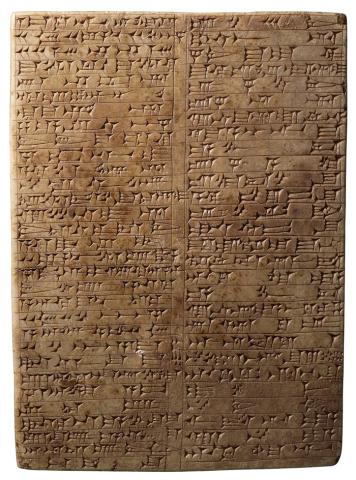
Sometime during the middle of the fourth millennium B.C., the earliest known writing system was developed in southern Mesopotamia. The need for a system of keeping track of the distribution of resources, such as produce and livestock, became an economic necessity. Using what they had at hand, the Mesopotamians took reeds from the riverbanks and adapted them as tools to impress into clay wedged-shaped marks that were then assigned meanings, an intellectual achievement that amounted to nothing less than the invention of writing. This syllable-based writing system, now called cuneiform, from the Latin word cuneus, meaning "wedge," proved so efficient that it was used for some 3,000 years.
Impressed clay tablets were the vehicle of diffusion for Mesopotamian civilization—its laws, literature, religion, and sciences, including astrology and medicine. It was, however, deemed that the medium of clay was not sufficiently durable for some documents. Impressing signs with a reed stylus onto clay was a simple and relatively quick process. It did, nevertheless, entail great skill and some difficulty on the part of carvers who imitated the process in stone. Since Mesopotamia was almost entirely lacking in stone, the stones themselves were imported and were highly valued, even as raw materials. These inscribed stone objects reflect humanity's enduring desire to leave a permanent record of its existence and accomplishments.
The collapse of the Assyrian and Babylonian civilizations and collateral loss of their languages, scripts, and innovations in the arts, sciences, religion, and statecraft was so complete that these achievements were obliterated for ages. Since the 1800s it was recognized that cuneiform held important secrets; by the 1860s the script was finally deciphered. The study of these tablets continues to be the subject of serious scholarly pursuit.
Unless otherwise indicated, all objects are from the Morgan's collection.
This installation is made possible by a generous gift from Jeannette and Jonathan P. Rosen.
